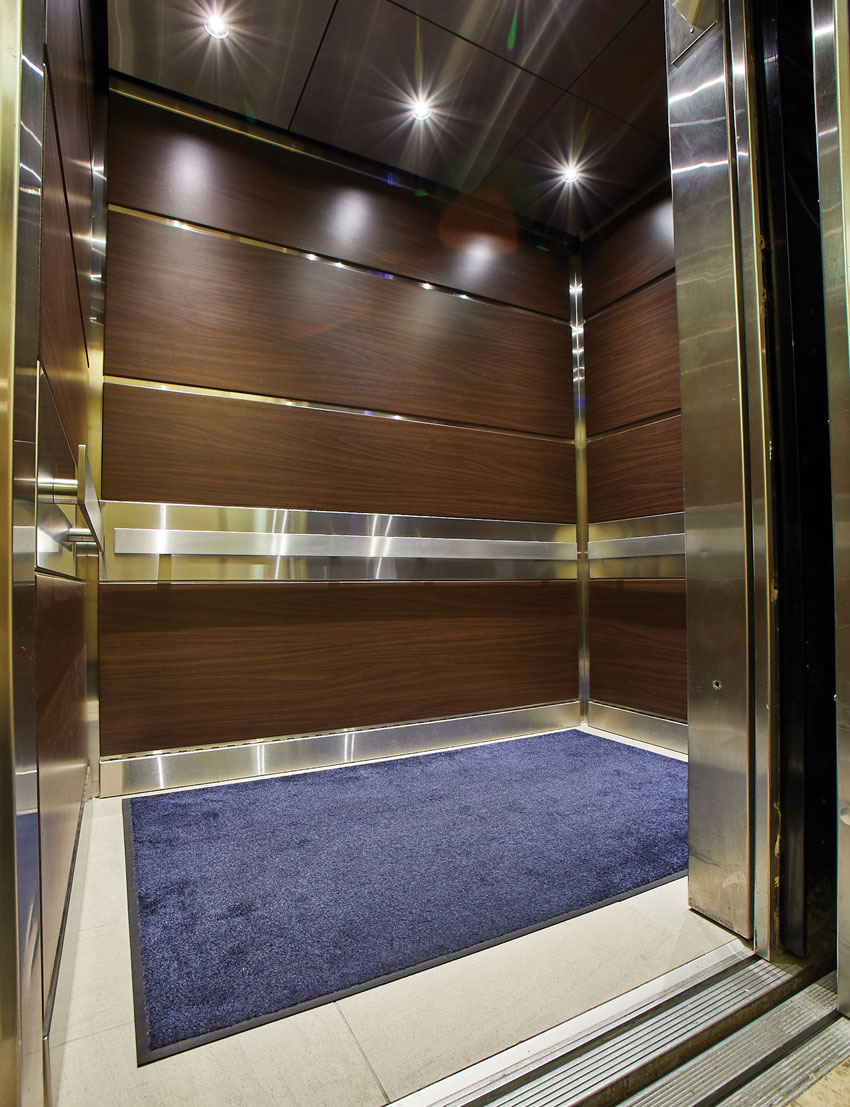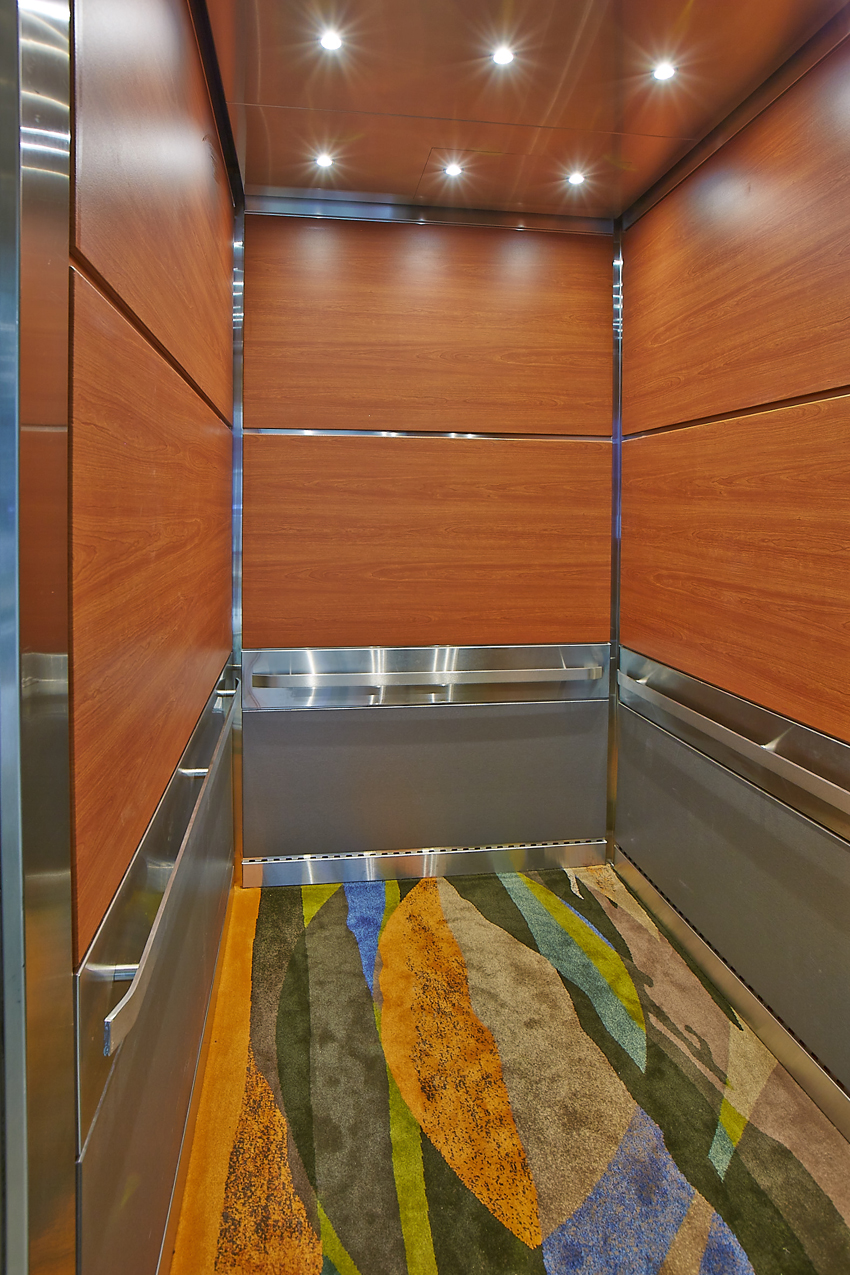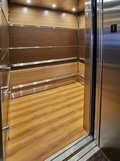Multifamily Design in 2020
Fire Resistance or Moisture Control
Sometimes, expansion joints need to cross areas that must fire resistive or retard vapor and moisture. In these cases, the selected expansion joint systems need to provide evidence of providing such capabilities. Vapor-resistant expansion joints need to be tested to show their degree of permeability to moisture or vapor. Fire-rated joints should be tested to meet ASTM E1966 and E1399. Note that water infiltration will usually destroy fire barriers, therefore systems with an integrated water guard (with proper drainage) can keep barriers dry and effective.
Elevator Cabs
Among the most used spaces in a multistory, multifamily building are the elevator cabs. As such, these cabs are subject to deterioration and damage precisely because of their heavy use. This damage gives the impression that the owner does not care about upkeep of the building, which in turn may create a negative perception of the entire organization. Therefore, the elevator cabs need to be upgraded regularly either to overcome a worn and unsightly appearance or simply upgrade the look to be consistent with the rest of the building.

Photo courtesy of Inpro
Discussions with clients about elevator cab updates should be part of preplanning for any renovation project. New cab panels, trims, ceilings, and LED lighting bring such projects to full-circle completeness.
Further, leaving an old, damaged, dark, and dingy elevator cab out of a larger building renovation project can very well make the appearance look worse and leave an otherwise beautiful upgrade project with a serious black eye.
The most cost-effective and innovative way to carry out such an elevator cab upgrade is to use preconfigured elevator cab renovation systems from a manufacturer that has a specialty line of products to address these needs. This system can include any or all of the following elements.
- New panels: The elevator panels that line the walls primarily make up the appearance of the cab. These panels also typically take quite a beating from tenant move-ins and outs, maintenance equipment, vandalism, and whatever else may come their way. Fortunately, the panels can be made of durable and rugged materials that can look like any range of materials, from wood to metal to stone or custom choices. Picking the best looking and most durable material at the outset means that the building owner will not need to replace it with a more durable product that should have been installed in the first place.
- New ceilings and lighting: Elevator ceilings come in many different styles and can be selected to suit an overall design concept. Lighting in elevator cabs can be chosen from among common lamping options, such as halogen, incandescent, fluorescent, or energy-efficient LED. Keep in mind that people tend to be more comfortable in a well-lit interior, so combining a brighter ceiling with increased lighting output can help people feel more relaxed inside, not to mention create a newer and cleaner look. The energy efficiency of increased elevator cab lighting may not seem significant at first, but consider that, in most cases, these lights stay lit 24 hours a day, seven days a week, which can add up to a lot of energy cost. By selecting energy-efficient LED lighting, energy costs are reduced, and their longer service life notably reduces maintenance costs for replacements.

Photos courtesy of Inpro
Renovation projects to modernize elevator cabs can include wood patterns with custom graphics plus new ceilings and stainless steel handrails.
- New handrails: Handrails in elevators not only address ADA or accessibility code requirements, but they also provide stability for users (i.e., something to grasp) when the elevator stops and starts. Beyond the people aspect of handrails, they provide a means for a complete look to the cab and can act as a wall guard too. By providing a stand-off surface from the wall of the cab, it can reduce the chance of equipment or furniture striking the wall panels. As part of a total system for elevator cabs, handrails come in different shapes, sizes, and finishes.
Paying attention to both the appearance and durability of elevator cabs can clearly pay off in terms of creating successful, innovative interiors for multifamily buildings.
Conclusion
Residents of multifamily housing are understandably affected by the events of 2020 and looking for places where they feel safe, such that their health and welfare are protected. Building owners are usually happy to meet this need as long as it can be integrated appropriately into the building construction and budget. Architects and other design professionals can use the approaches presented in this course to meet these needs in creative, appropriate, and affordable ways.
Notice

www.inpro.com

www.nanawall.com


www.rockymountainhardware.com

www.tamlyn.com










